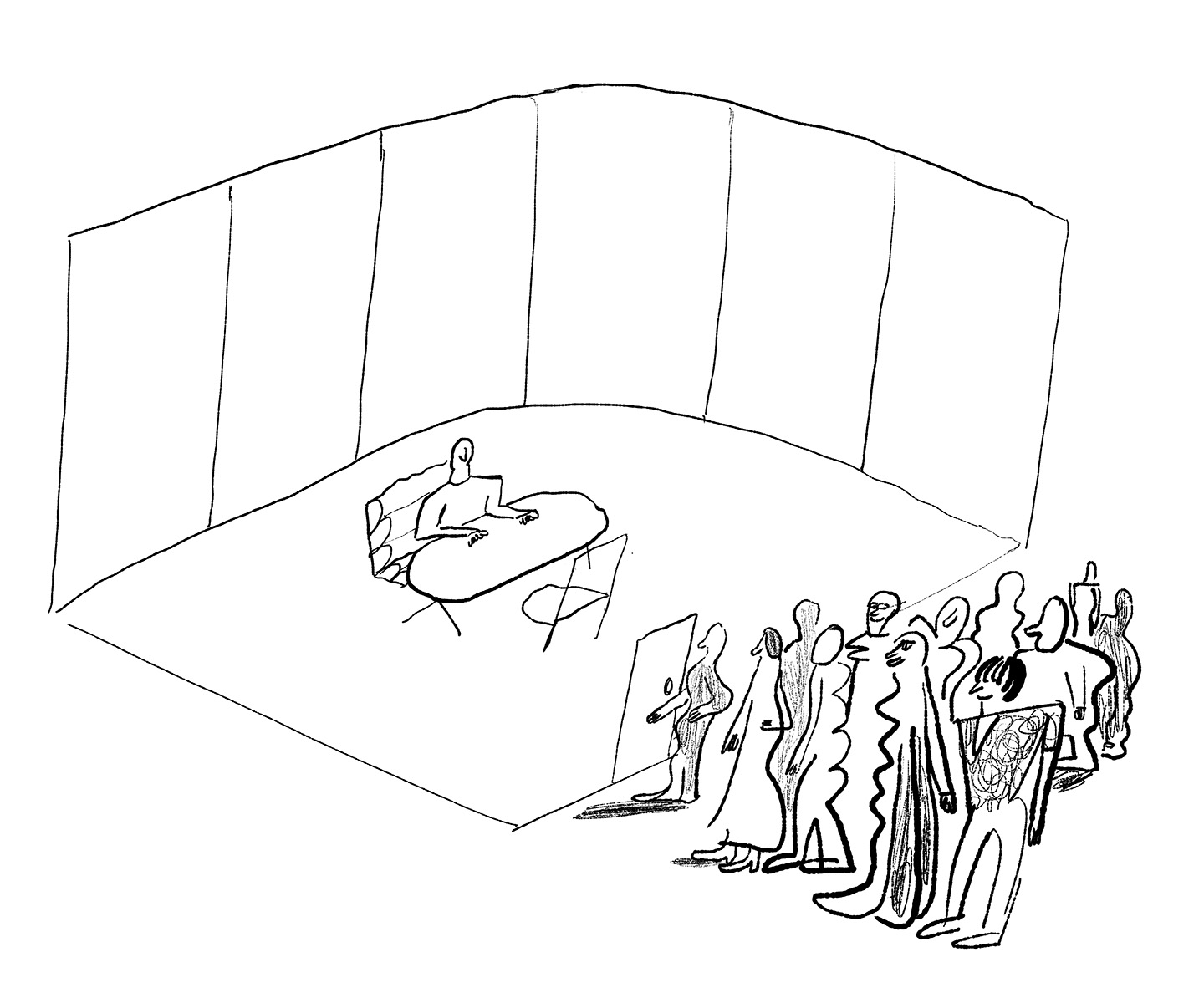The traditional career ladder is broken. Disappearing entry-level positions and increasing vacancies at the top means it’s time to rethink hiring practices.
For several years there was a hand-written sign in the window of Falcon Kitchens on Ossington St. in Toronto: “Experienced Cabinetmaker Wanted”. When I saw it, I considered that in order to hire an experienced cabinetmaker, there would have to first be an apprentice cabinetmaker. This led me to wonder about the state of work more broadly – how even outside of artisanal professions and trades there is increasingly less traction for training workers, and for decent entry-level positions geared towards growth. In my own field of arts and culture, I have seen repeated postings for Executive Director positions. Calls for coordinators, managers, heads, leads, and officers take turns revisiting my feeds, searching for candidates that don’t seem to exist. On the other hand, I have seen ads overstuffed with descriptions for three or four different roles (i.e., a front-desk administration job, but with responsibilities in communications and graphic design), often with unfair compensation and a lack of benefits. What this all points to is that if fewer entry-level jobs exist generally, there are more potential workers than open positions, and the pool of those qualified and ready for leadership positions also shrinks. So, what happened to these entry-level jobs? An article from August 2014 in the Wall Street Journal, titled by asking this same question, argued that proximity to the 2008 recession was driving certain trends: companies kept costs down through automation, outsourcing, cutting training and payroll budgets, and slashing entry-level jobs. Around this time, a slack labour market meant more candidates than available positions, so employers raised experience requirements for what would have been entry-level roles. New graduates were increasingly expected to arrive job-ready, the only real choice being unpaid internships on top of course loads – something that is difficult or impossible for those from economically disadvantaged backgrounds, who may already have paid jobs just to get through school.

Today, these are not so much trends as absolutes, and they have gotten worse as they’ve become more entrenched. An article by Kate Brown for the BBC in September 2021, called “Why inexperienced workers can't get entry-level jobs,” opened with a statistic that, of four million entry-level job postings on LinkedIn since 2017, 35% required years of previous work experience in the field. Since the aforementioned 2014 article, there is now the added bonus of applications being put through algorithms that filter for keywords. One person interviewed by Brown claims that doing multiple internships to stand out is now the norm. Brown also notes that work once assigned to early-career workers has been taken over by technology, meaning that what is left are jobs requiring specialized soft skills and client-facing roles that would normally have been mid-career level work. I’ve experienced these effects myself, seemingly applying into the void of every job since the end of my degree. Particularly in the arts and culture sector, there’s long been an internalized impression that it is passion work, and largely frivolous. Therefore, it should be competitive and sparse, and workers should accept a pittance. But if employment is the foremost factor affecting how people are able to engage with the world - and this world requires more than tech, STEM, and business to function - maybe it's time to acknowledge what’s really going on here. Recent discourses around work since the pandemic have largely focused on worker psychology and personal failure – Kim K’s “get off your ass and work” rant, restaurants passive-aggressively insisting no one wants to work, a New York Times piece about quitting being contagious. Without any history or analysis, we’re constantly missing the point. Going into debt for higher education, and hopefully some upward mobility, is now more or less a given. Attaining meaningful employment afterwards, at this point, is not. While there have been studies and reports on this topic over the years, there has been little in the way of corrective action. In many ways we are still living with the consequences of the 2008 recession, its austerity measures now deeply anchored into the practices of employment. Perhaps we have reached a peak cognitive dissonance about work with the glaring disparities in who is available to do which jobs in certain fields, and who has been left out in the cold altogether.
–
Angel Callander is a writer and editor in Toronto, currently Assistant Editor of Peripheral Review. Her work can be found in publications such as Canadian Art, C Magazine, BlackFlash, Public Parking, and Cornelia, as well as in Interface Critique I (Kulturverlag Kadmos, 2016), and Architecture and the Smart City (Routledge, 2019). East Room is a shared workspace company providing design-forward office solutions, authentic programming and a diverse community to established companies and enterprising freelancers. We explore art, design, music, and entrepreneurship, visit our news & stories page to read more.